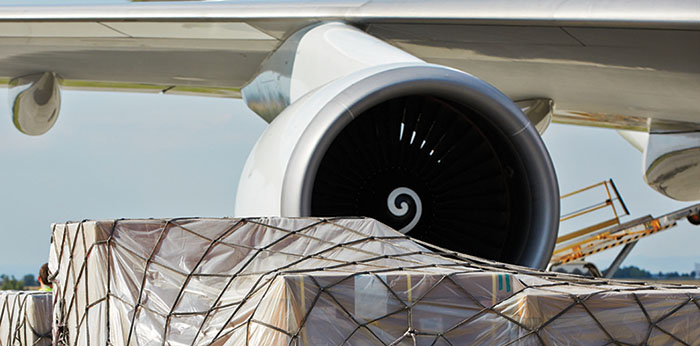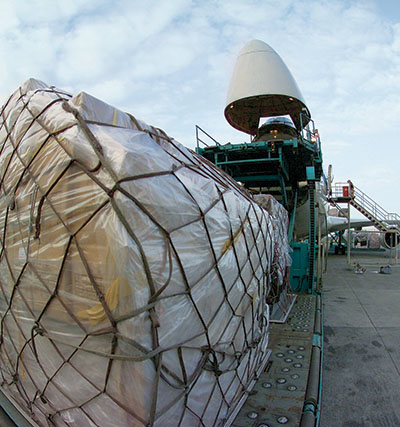2017 Air Cargo Roundtable: Positive Outlook Driven by New Demand
Our panel of air cargo experts convenes to examine the issues air shippers face today regarding a surge in global demand, new regulatory measures and the ongoing refinement of service-oriented technologies.
Buttressed by the widespread availability of competitive rates and continued expansion in network connections, global air cargo markets showed renewed strength in the second half of the 2016 after a weak start.
So far this year, says the research team at Boeing, that trend seems to be holding. Furthermore, Boeing projects air cargo traffic will grow at an annual rate of 4.2% over the next 20 years. Yet questions remain about how global shippers will secure air capacity, penetrate new markets and still make money in ongoing transactions this year as the air cargo market gets a much needed shot in the arm from surging global demand.
Joining us to examine these concerns in greater detail are Brandon Fried, executive director, Air Forwarders Association; Chuck Clowdis, managing director of transportation advisory services for IHS Global Insight; and Dr. Michael Hanke, founder and managing director of SkaiBlu, an e-commerce consultancy assisting clients in the aviation industry.
Logistics Management (LM): What new service levels should shippers expect from air cargo providers and other stakeholders?
Michael Hanke: From a digital perspective, we’re seeing a host of Web-enabled applications that allow real-time, customer-tailored interaction between air cargo providers and shippers. Just think of artificial intelligence (AI)-based “chatbots” that comprise digital assistants that can answer standard customer service questions around the clock in multiple languages.
With these developments, human customer service staff can now focus on more complex service issues. At the same time, shippers are likely to look for more online self-service tools including automatic notifications on shipment status, smart site search and B2B social media networks—similar to what is already commonplace in the B2C environment.
Brandon Fried: It’s true that our members are focusing on providing shippers with technology, visibility and service flexibility today more than ever. Freight forwarders are playing an ever-increasing role in the e-commerce world where automation is essential in assisting shippers with their online fulfillment needs.
Providing suitable platforms for easy order entry and shipment in-transit visibility is crucial as is the flexibility of offering many types of services that allow for out-of-the ordinary load sizes, multiple distributions, and, if necessary, shifting to other modes to get the job done.
Chuck Clowdis: Indeed, we’re seeing discussions by the larger air cargo service providers to integrate more of their own services—that is where alternatives to air, like ground expedited, are supplied by a third party. Larger shippers who require time-definite deliveries are demanding carriers and middlemen tender shipments irrespective of mode. This allows single tracking/tracing and better pricing negotiation overall.
LM: Do you anticipate any new regulatory challenges for air cargo shippers to come about this year?
Clowdis: Well, it’s really too early to tell. There may be changes brought about by moves to privatize air traffic control, but not in the next 12 months.
Fried: I have to agree with Chuck. The new administration ordered an immediate regulatory stand down, halting regulations in the process pending their review. The most significant rule in the process for the air cargo industry in the United States is the Air Cargo Advance Screening initiative, requiring the submission of shipment data to the Department of Homeland Security (DHS) before shipments bound for the United States load at foreign airports. Because this proposed regulation would ultimately be an essential tool in the screening process, we look forward to the administration releasing its “notice of proposed rulemaking” as soon as possible.

LM: What about other security issues? Are there any new concerns?
Hanke: As the air cargo business and the external environment undergo a digital transformation of unprecedented scale and speed, cyberspace security risks will continue to increase. Certainly, AI, the Internet of Things (IoT), robotics and automation all will be hugely beneficial as we create a more efficient air cargo supply chain, but the new vulnerabilities can’t be discounted.
However, some shippers and consignees view security as an “obligation.” Instead, cyber security should be treated as a necessity. At the same time, of course, legislators and manufacturers of IoT devices need to be taken to the task as well, and fast. This will not be easy considering that technology is changing so rapidly while cyber criminals are steps ahead of everyone else.
Fried: Michael makes a good point. Our government and the air cargo industry today is smarter about security than ever before, but there remains a collective realization that the sector remains a top terrorist target and that we can never reduce our vigilance. TSA is always changing our security programs in response to this threat, and our stakeholders remain very active within the DHS through frequent participation on its numerous security advisory committees.
Clowdis: Plus, it’s important to realize that security continues to be a major concern with aircraft as well as cargo security. Scanning and more transparency in goods shipped will intensify, while tightening of the security measures on air cargo personnel with access to planes will likely get tougher. It’s still a vulnerable area, despite all of the efforts thus far.
LM: Will the current air cargo infrastructure support a surge in demand?
Clowdis: In most cases, the present structure can withstand all but a major, dramatic surge in air shipments. But of course, first and last mile to and from airports will continue to be challenging in current congested areas.
Fried: While we believe that new aircraft entering service now provide more belly capacity than ever before, the Airforwarders Association remains concerned about airport cargo infrastructure.
Insufficient road access to cargo terminals creates congestion, and high driver waiting times are threatening the value proposition unique to air cargo of delivering shipments quickly.
LM: What strides in technology and information services do you expect this year?
Hanke: I see the continued “consumerization” of information technology—whereby consumers adopt technology first, which then finds its way into the B2B world—will continue. For B2B supply chain participants to be successful in air cargo, they need to have a close eye on digital trends and developments in the B2C market places.
This means adopting to personalization by tailoring products and service; a mobile-first perspective; voice-empowered intelligent personal assistants (IPAs) for customer service; the introduction of new universal payments such as Bitcoin; and the emergence of new digital platforms such as wearable computing, Internet of Things (IoT), and virtual reality. These are just a few examples to watch.
Fried: Thanks to Cloud computing, automation in the freight forwarding industry has never been less expensive, and forwarders are enhancing their technical assets to provide better end-to-end visibility to the customer. The challenge continues to be designing systems that can work not only with one company, but across many platforms.
The most significant advancement in automation continues to be U.S. Customs’ Automated Commercial Environment system that allows one portal for import and export trade-related filings. The agency has made considerable progress in this area, but there’s work to be done. When complete, the system will be one of the best single window trade portals in the world.
LM: Do you see any new air cargo players emerging to challenge traditional carriers?
Fried: We’re seeing the entry of online retail giants offering logistical services in the marketplace, which may or may not be challenging to the air cargo industry. As you may know, both Alibaba and Amazon have purchased Non-Vessel Operated Common Carrier certificates, and Amazon now flies 40 aircraft throughout the United States. While we understand that these initiatives could be attempts at driving efficiencies within their fulfillment schemes, offering delivery services of products not sold by them may be a possibility in the future.
Hanke: More disruptions of traditional supply chains by technology companies and online retailers along the lines what we’re seeing with Alibaba and Amazon are likely. Amazon—and other retailers including Walmart—might even go down the path of working largely through their own proprietary ecosystems with a mix of digital properties and physical assets to handle their supply chain needs.
Shippers should think about this: In October 2016, Uber announced “Elevate,” the development of a flying taxi network that’s planned to launch in 2026. This new mode of transport could also be useful in an air cargo context. And don’t forget Google. One can only speculate what they’re up to in the logistics space, but whatever they do, it will matter.
LM: Finally, how can shippers ensure that they will have enough capacity when they need it?
Clowdis: As with most every mode, we urge securing capacity through what means are appropriate to each shipper. For example, “assured volumes” can go far in making certain space is available when needed. A “date certain/space certain” concept is being tested quietly by a few shippers in contracting negotiations to make certain that they have capacity during their peak seasons—and especially during new product release dates.
Fried: Forwarders continue to provide creative solutions to even the most complex logistical challenges because they are not bound to one system for transporting cargo. Shippers and their forwarding partners must work closely together in anticipating future needs in order for capacity to meet requirements in response to any demand presented. Indeed, flexibility and creativity are the cornerstones of forwarding success in assisting shippers to execute their business plans.













